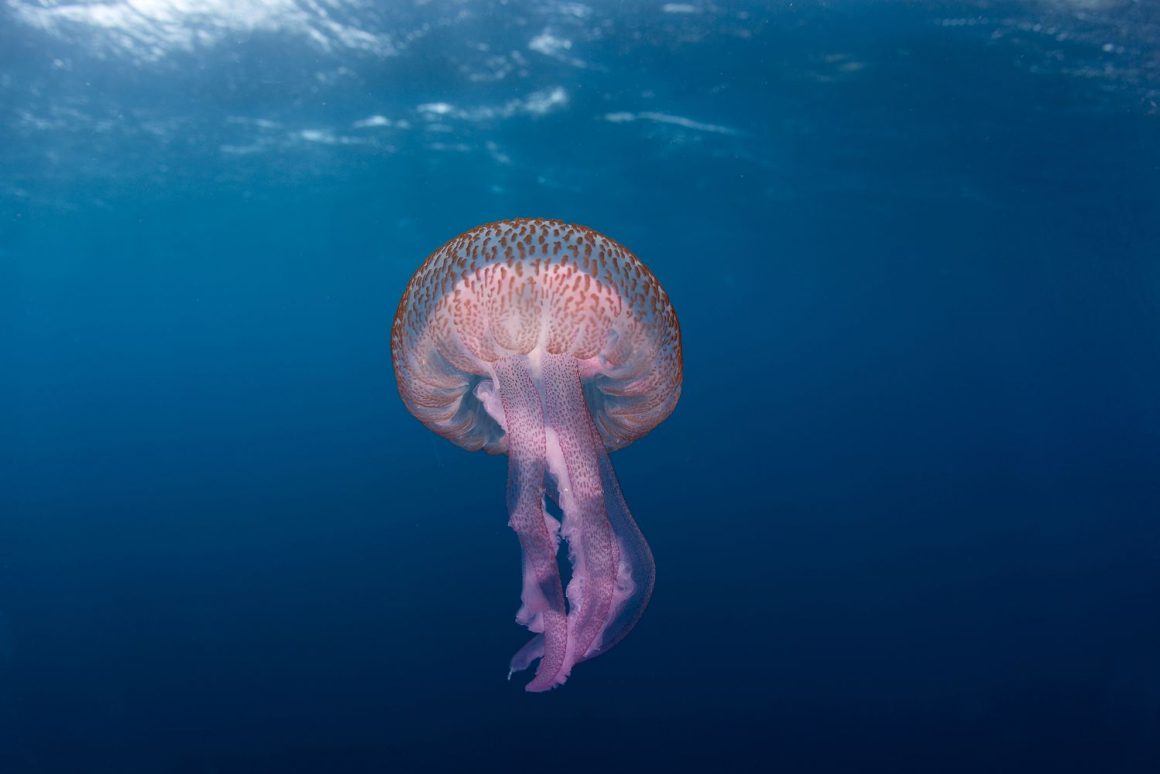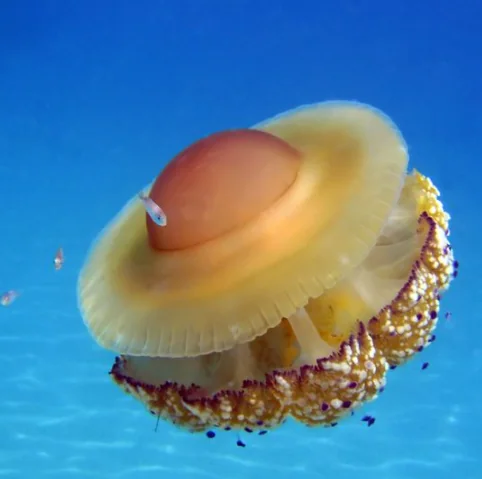Gozo Microgreens. Rooted in Gozo
How Local Farming is Thriving One Microgreen at a Time There’s a quiet revolution taking root in Gozo, and it’s happening most unexpectedly. No sweeping
Gozo and Malta, nestled in the heart of the Mediterranean, are renowned for their stunning landscapes, rich history, and vibrant culture. However, beneath the crystal-clear waters that surround these islands lies another wonder of nature – the jellyfish. Often misunderstood and underappreciated – feared even, these graceful creatures play a vital role in the marine ecosystem while offering surprising healing benefits to those who encounter them.
There are many different species of jellyfish found in Gozo that arrive all year round. Last year the Times reported on a colony of ‘by-the-wind sailors’ that washed up on our shores and locals won’t forget the highly stinging three metre-long ‘barbed-wire jellyfish‘ that visited us last year.
The jellyfish in Gozo and Malta you want to avoid is the Pelagia noctiluca. They are small, with long tentacles and have a purple tinge to their body. The stings can feel similar to a stinging nettle sting, but on children, it can be worse. We share the right things to do, if you are stung by a jellyfish below. The waters here are clear, so you are able to spot them from quite a way away. Wearing goggles helps you to avoid them entirely.

While many jellyfish species possess stinging cells (nematocysts) there are some types that do not sting at all or have reduced stinging capabilities. These non-stinging or minimally stinging jellyfish species are often referred to as “harmless” or “non-toxic” jellyfish. The most popular being the ‘Fried Egg Jellyfish’ (Phacellophora camtschatica). You can swim with these beauties late summer as they swarm in from cooler climes and I must say, it was daunting at first, but post-surrender, it was one of the most magical experiences.
While these jellyfish species are generally considered harmless to humans, it’s essential to exercise caution and avoid touching any jellyfish encountered in the water, as some individuals may have sensitivities or allergic reactions to jellyfish venom. Additionally, even non-stinging jellyfish can sometimes cause mild irritation or discomfort if they come into contact with sensitive areas of the skin.

While encounters with jellyfish may evoke fear in some, these fascinating creatures offer unexpected healing benefits. Jellyfish have been studied for their potential therapeutic properties, particularly in the field of skincare. A recent article by Stephanie Taiber for Undark discusses how they might be beneficial for human skin plus she explores the anatomy of a stinging cell – the thing we are all most afraid of. It’s well worth a read as it toys with ideas of future health benefits of their fluorescent protein. It may at least help you to appreciate their existence, if nothing else.
Too, anecdotal evidence suggests that jellyfish stings may have medicinal properties. Traditional healers in some coastal communities use jellyfish venom to alleviate pain and inflammation associated with conditions such as arthritis and rheumatism. While further research is needed to validate these claims, they offer a glimpse into the potential medicinal value of these marine creatures.
It has been said, that the gelatinous substance found in their tentacles, known as jellyfish extract or collagen, is rich in proteins and antioxidants. When incorporated into skincare products, jellyfish extract is believed to promote collagen production, improve skin elasticity, and reduce signs of ageing. I don’t know about you, but I think I’ll opt for wrinkles if it means smearing a stinging jellyfish all over my face.
Beyond their healing benefits, jellyfish play a crucial role in the marine ecosystem of Gozo and Malta. As planktonic predators, they help control populations of small marine organisms, thus maintaining ecological balance. Additionally, jellyfish serve as indicators of ocean health, with their abundance and distribution influenced by factors such as water temperature, salinity, and nutrient levels. Monitoring their populations can provide valuable insights into the overall health of marine ecosystems and the impact of human activities on coastal waters.
Despite their ecological importance and potential therapeutic value, jellyfish often face threats from human activities such as overfishing, pollution, and habitat destruction. Efforts to conserve these creatures and their habitats are essential for maintaining the biodiversity and resilience of marine ecosystems.
In the waters of Gozo and Malta, raising awareness about the importance of jellyfish and promoting responsible coastal practices can help foster coexistence between humans and these fascinating creatures. Educating locals and visitors about jellyfish safety, including proper swimming techniques and first aid for stings, is crucial for minimizing negative encounters and ensuring the well-being of both humans and jellyfish.
There is a super Facebook group that is a great resource through the summer months.
Swimming in the sea is a delightful experience, but encountering jellyfish can turn a pleasant swim into quite an ordeal. To ensure your safety and enjoyment in the water, here are some top tips for dealing with jellyfish:
By following these tips and exercising caution when swimming in the sea, you can minimize the risk of jellyfish encounters and enjoy a safe and enjoyable beach experience but remember, we are swimming in their front room – not the other way around!
How Local Farming is Thriving One Microgreen at a Time There’s a quiet revolution taking root in Gozo, and it’s happening most unexpectedly. No sweeping
Why Should You Think About Retiring In Gozo? More people crave simplicity, nature, and community nowadays and this small Maltese island is quietly drawing in
Why More Expats Are Choosing Gozo Renting long term in Gozo is a breeze with our handy step by step guide. With its rugged coastlines,
Why Move to Gozo? Thinking about a move to Gozo? You’re not alone. This tiny island in the heart of the Mediterranean has quietly become